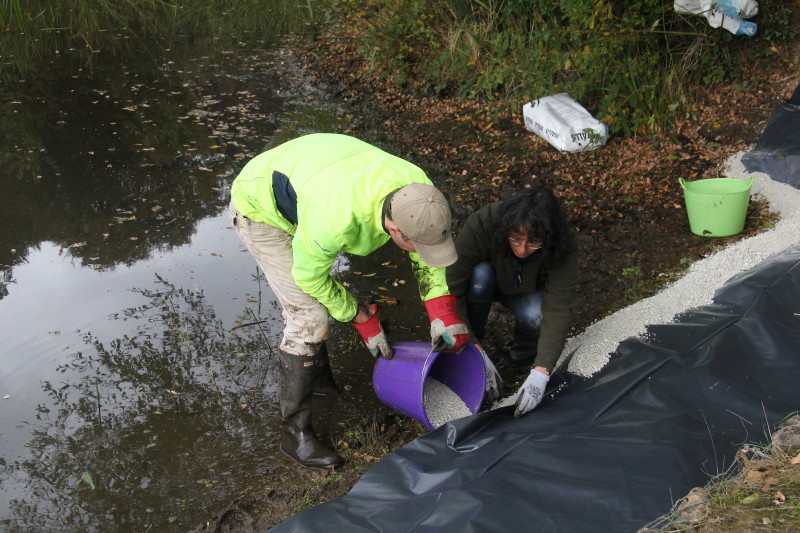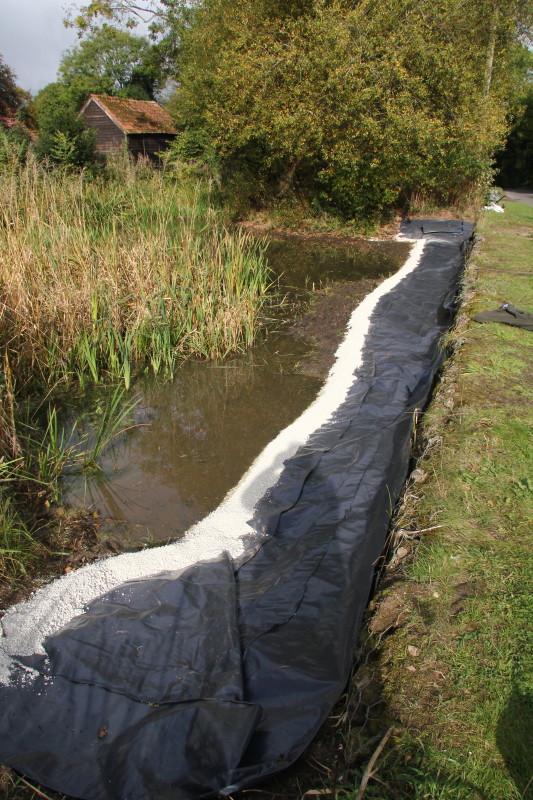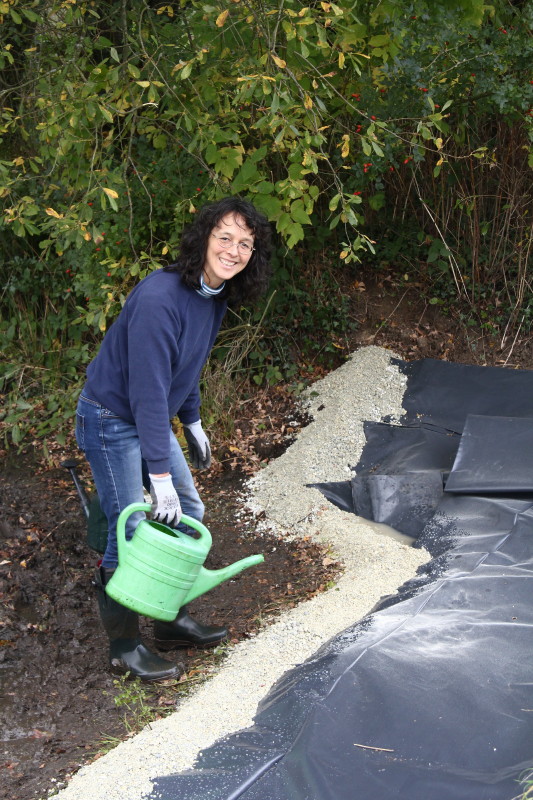Find out what happened to the smallest baby owl from last years brood at Hawridge.
Read MorePonds Update by David Dennis
Phase 1 (the messy phase!) of sealing the leaks in the pond has been completed today, with Isobel Clark, Mark Hobbs and Brian Harris doing most of the heavy work.
Read MoreThe dilemmas of the pond by Isobel Clark
The New Zealand Pygmy Weed has disappeared from places where we have had black plastic covering it but, unfortunately, it has now invaded some of the areas where there was no plastic. As far as we know, nothing predates the weed. There is a selective spray but this is only 70% effective. The radical strategy suggested by experts is to pump out the pond and spray to kill everything.
There is no guarantee that it won’t return, however, since birds can bring it in from nearby ponds although it is interesting to note that the dew pond, not far away, shows no sign of it.
It may be that sealing the gabion wall along the roadside, and thereby making the pond deeper, may reduce the NZPW but it is also possible that it may just become the aquatic form, which is just as bad. The benefit of deeper water is two-fold: firstly, any black plastic will be less visible at low water levels and secondly, the Sweetgrass, which otherwise will completely fill the pond, seems to prefer shallow water. Leaving the plastic as a permanent feature while the water depth is so low is not preferred as it is such an eyesore. The Committee agreed to consider the possibility of increasing the water depth by sealing the gabion wall (if possible) and then using submerged black plastic again to shade out the NZPW.
The Sweetgrass is relatively well controlled at the moment but that has largely been down to the black plastic but, now it has been removed, this will allow the Sweetgrass to spread again. We do not now have many volunteers working on the pond and so removing the Sweetgrass by hand, with the black plastic removed, may not halt its advance in the future.
Pond Conservation; the Canal and River Trust; and the Million Pond project will be contacted for advice and possible sources of funding.
Apart from the Pygmy Weed and Sweetgrass problems, the pond is looking good.
Owl and Raptor Nesting Boxes update by Linden Bevan-Pritchard
An update on the HCCPS Owl and Raptor nesting box conservation project situated on the Hawridge and Cholesbury Commons, in the Chiltern Hills.
Read More




